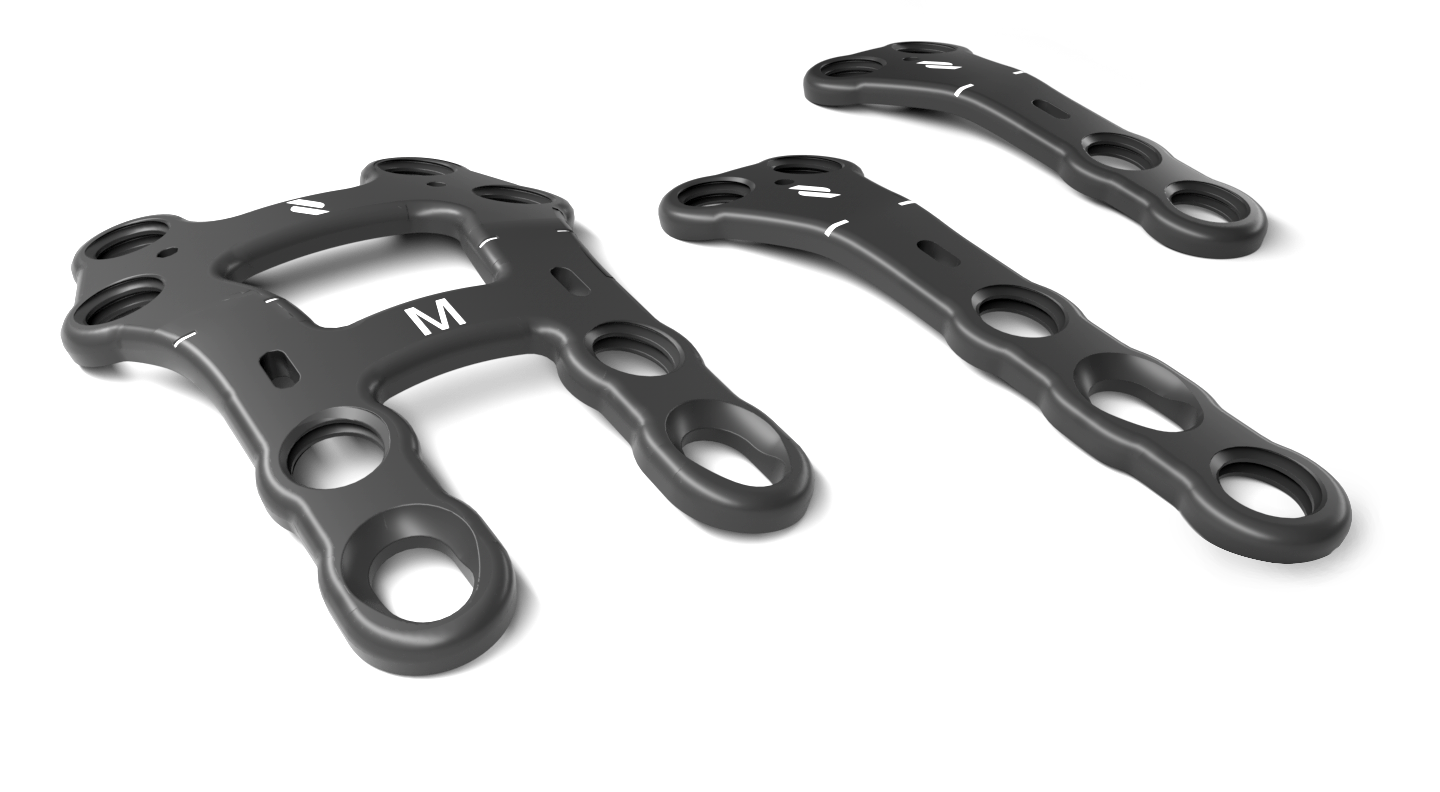Lisfranc
The 1.5mm profile of the lisfranc plates provides strength and stability as it addresses patients with shallow tissue envelopes. These plates are precontoured with a built-in ridge angle to accommodate metatarsal declination.
This anatomic bend reduces the risk of accidental ray elevation during fixation, which can lead to transfer lesions of the adjacent metatarsals. All plates allow for the option of locking and non-locking Ø3.0mm or Ø3.5mm screws and include an oblong hole for additional metatarsal compression and fixation.
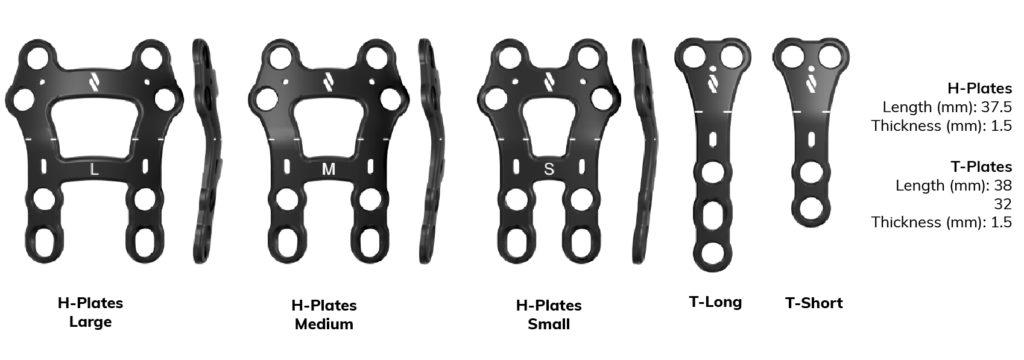
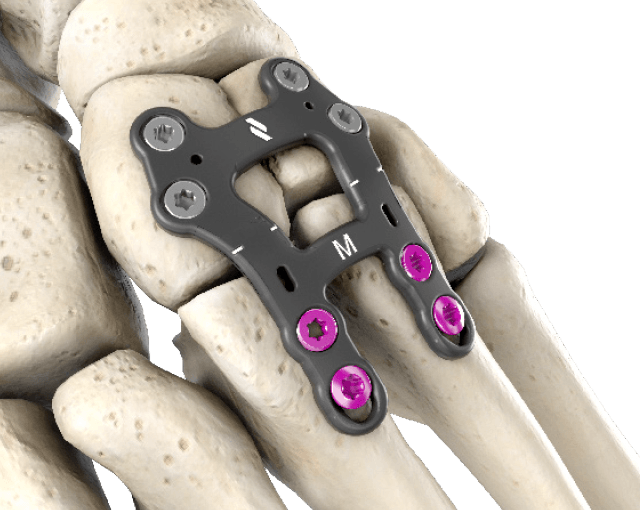
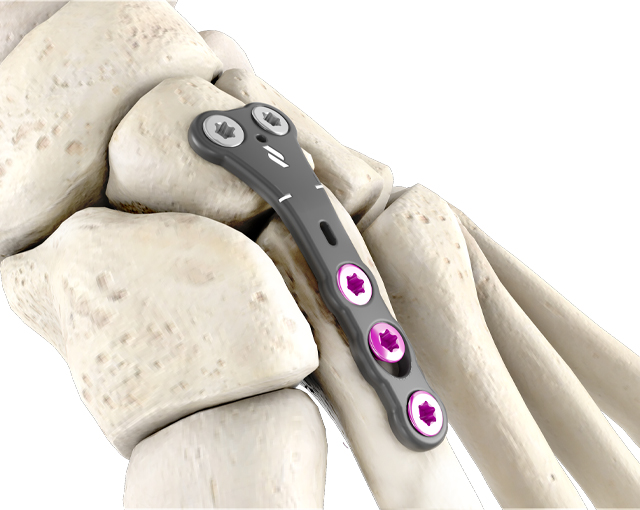
Lisfranc
The 1.5mm profile of the lisfranc plates provides strength and stability as it addresses patients with shallow tissue envelopes. These plates are precontoured with a built-in ridge angle to accommodate metatarsal declination.
This anatomic bend reduces the risk of accidental ray elevation during fixation, which can lead to transfer lesions of the adjacent metatarsals. All plates allow for the option of locking and non-locking Ø3.0mm or Ø3.5mm screws and include an oblong hole for additional metatarsal compression and fixation.


Low profile design > Plate thickness optimized according to the indications to limit subcutaneous discomfort.

Monoaxial & Polyaxial System
The Airlock® Ø3mm and Ø3.5mm locking and non-locking screws may be used in all Airlock plate fixation threaded holes. However the standard compression hole only accomodate Ø3mm non-locking screws, and the Presslock® compression hole only accomodate Ø3.5mm locking screws.
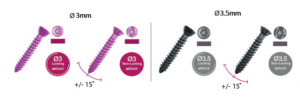
- Monoaxial locking screws
- Polyaxial non-locking screws
- Tapered head
- Self-tapping design
- Self-retaining driver / screw interface
Compression Screws
Additional compression can be achieved with a combined Nexis Ø4mm headless compression screw, beveled PECA Compressive Ø4mm screw, or Nexis Ø5mm headless compression screw.
All instrumentation is conveniently organized and color coded.

Airlock with Presslock Upgrade

Airlock 2.0

Airlock 2.0 Reduction Instruments
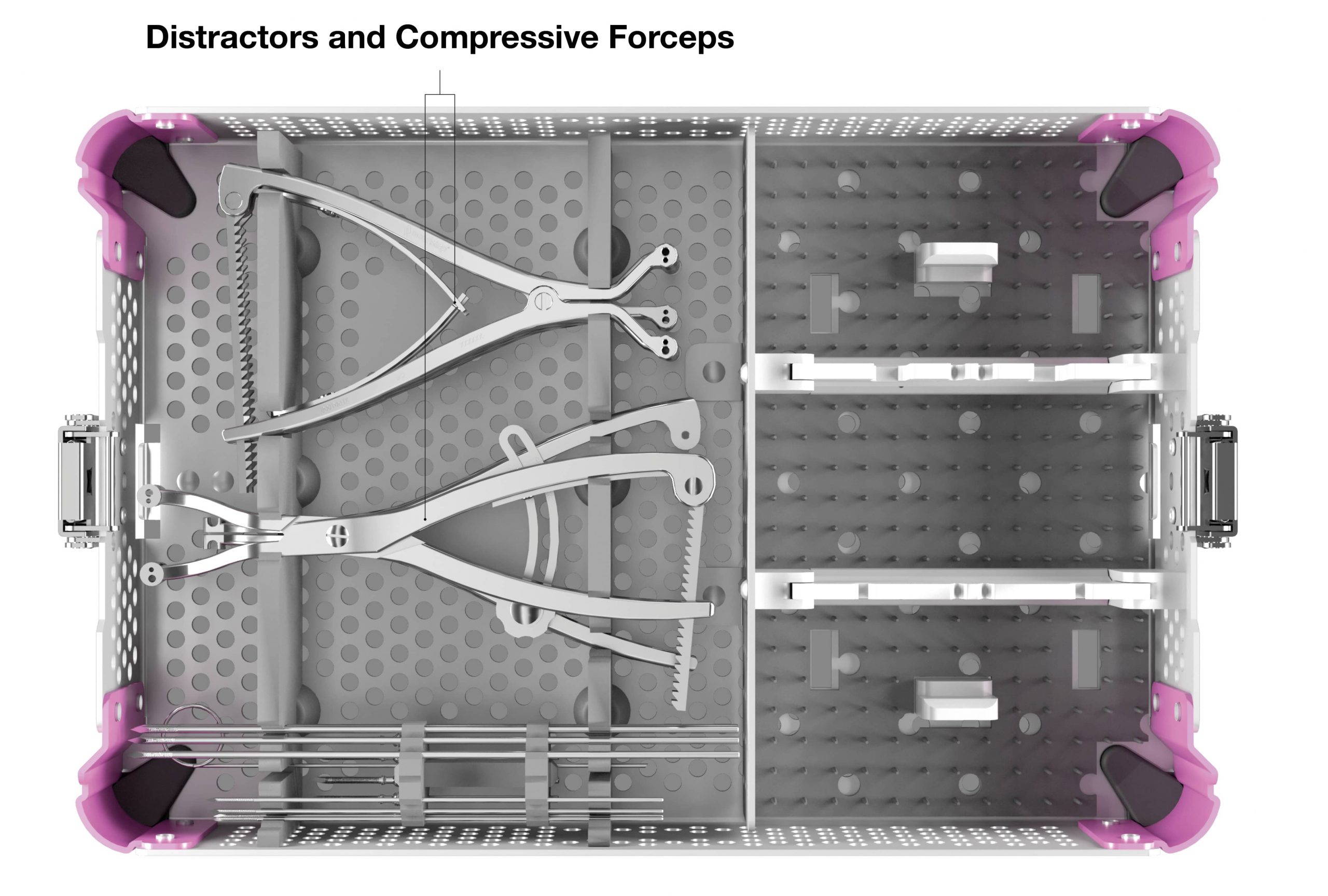
Prior to use Novastep® systems, carefully read the surgical technique, the instructions for use (IFU) and all packaging label information related to the implants and instruments.
Medical devices. Implants: Class IIb-CE1639; Instruments: Class I-CE / Class Ir-CE1639 / Class IIa-CE1639.

